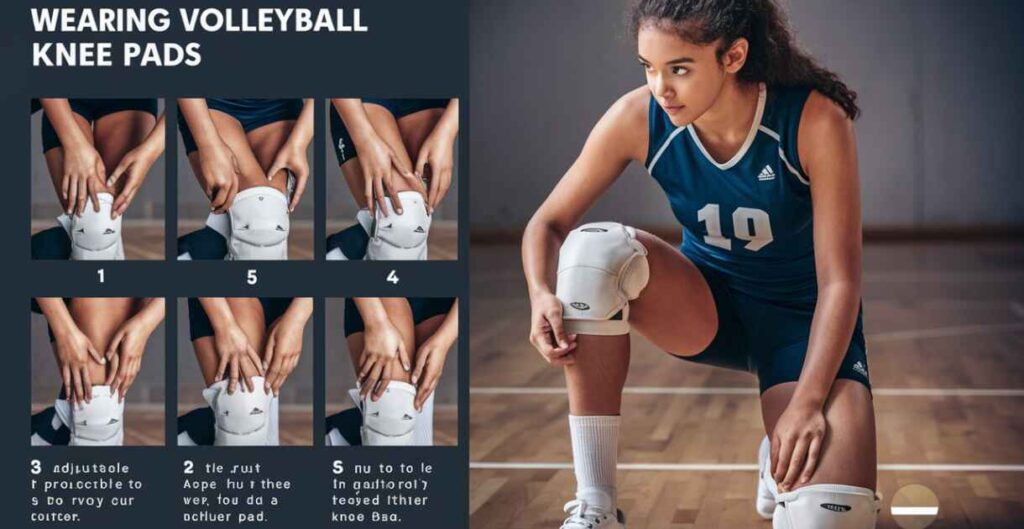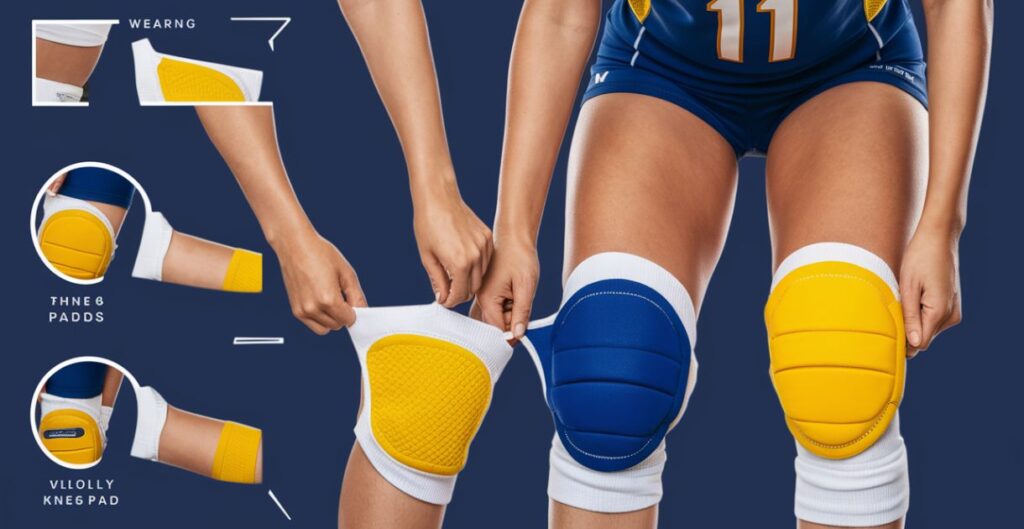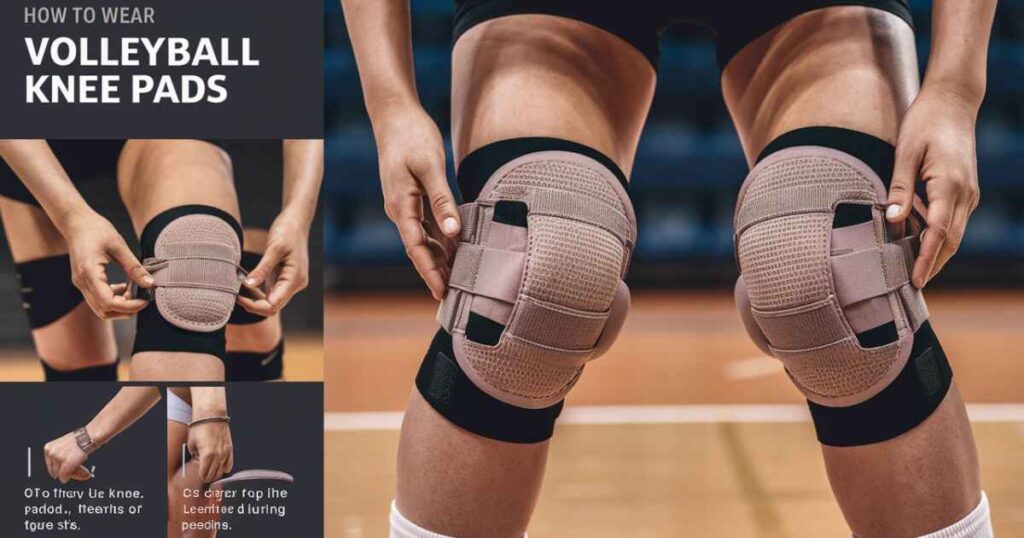Volleyball’s a game of dives, glide , and fast drops. Without the right speed , your knees could end up looking like they have gone ten circles with the court floor. That’s where volleyball knee pads come in, your reliable sidekicks in the battle opposed to bruises and scrapes.
Knee pads have come a long way, but tiring them just is still key to remain safe and comfy during those great matches. Whether you’re a seasoned pro or just begin out, nailing the knee pad game can make a world of variance.
In this guide we will walk you through everything you need to know about selecting the perfect pads and wearing them like a champ. From choosing the right size to positioning them just so, we have got you covered. So let’s go in and get those knees ready for some important action!
Choosing the Right Volleyball Knee Pads
Before we get into how to, let’s talk about selecting the perfect pair. It’s not just about grasping the first set you see there is a bit of strategy involved.
Size and Fit
Finding the right size is similar to Goldilocks’ find for the ideal porridge – not too tight, not too loose, but just right. Your knee edge is the magic numeral here. Wrap a measuring tape on all sides of your knee, just at the center of your kneecap.
This will give you your knee size, which you can match to the manufacturer’s sizing chart. Remember, a proper fit manner the pad hugs your knee without cutting off flow or sliding about like it’s on an ice rink.
Material and Design
When it comes to substance , you have got options. Most pads are made from neoprene, polyester, or a combination of both. Look for pads with moisture wicking things they will keep you dry through those intense rallies. Some even come with cooling effects to help you keep your cool under pressure. As for design, consider pads with extra packing in high-impact areas for those hostile dives.
Type and Style
Volleyball knee pads come in various styles to suit dissimilar players and positions. Slip-on pads are quick and easy, while wrap-around manners offer more customizable fit. Some players prefer longer pads for extra coverage, while others opt for a more minimal plan for greater mobility. Select what feels right for your playing style and situtation on the court.
How to wear volleyball knee pads: Proper Fit and Positioning

Now that you have got your pads, let’s build make sure they’re sitting pretty on your knees.
Finding the Snug Fit
A snug fit is key to safely keep your pads in place through all the action. When you put them on, they should feel safe but not restrictive. Try the pinch test: if you can nip more than an inch of matter , they’re too loose. If you cannot pinch any, their strength is cutting off your flow. The sweet spot is a little pinch of material.
Correct Positioning Technique
Positioning is crucial for highest comfort and shielding . The pad should protect your kneecap and extend a little below it. The top of the pad should sit just above your kneecap. This placement makes sure you’re protected when you hit the volleyball court, but still have the flexibility to go and jump freely.
Putting on and Adjusting Knee Pads
Time to suit up! Here’s how to get those pads on like a pro and remain them in place through your game.
Steps for Putting On
Begin by scrunching up the pad similar to a doughnut. Slip your foot by and pull it up above your calf. Once it’s close to your knee, adjust it so the padded part protects your kneecap. If your pads have modifiable straps, secure them now. Make sure they are snug but not tight sufficient to leave marks or restrict mation.
Adjusting for Comfort and Security
Once you have got your pads on, take a few minutes to fine strain the fit. Do some jumps, squats, and lunges to see how they feel in steps. If they slip or bunch up, readjust. Remember, you might need to twist them a bit during the game, mainly if you’re playing an especially intense match.
Maintenance and Care
Taking care of your knee pads will remain in top shape and expand their life. Plus, nobody desires to participate with the smelly gear!
Cleaning Methods
After each use, air out your pads to stop[ bacteria growth. For a deeper clean, most pads can be machine clean on a kind cycle with cold water. Avoid using bleach or jarring detergents, as these can smash down the material. Always air dry your pads, the dryer is too jarring for them.
Storing Properly
Once your pads are washed and dry, store them in a cold, dry place. Avoid filling them in your gym bag, where they can not air out. Instead, consider draping them or laying them flat in a well freshening area. This will help prevent odors and the cointune ad’s shape.
Preventing Injuries with Knee Pads

Knee pads are your initial line of protection against wounds on the court. Let’s talk about how they keep you safe and in the game.
Injury Prevention
Volleyball knee pads offer crucial protection opposed to usual injuries like bruises, abrasions, and even more important issues like bursitis.
They act as a buffer in the middle of your knees and the hard court surface, absorbing shock and making less of the impact of falls and dives. This protection allows you to play more confidently, knowing you have got a coating of defense.
Additional Support
Beyond just padding, knee pads can supply additional support to your knee joint. This can be especially beneficial if you are getting better from a previous injury or looking to prevent future difficulty. Some players even find that tiring knee pads helps remind them to maintain proper form, which can further reduce the risk of injury.
FAQs
How should volleyball knee pads be?
Volleyball knee pads should be cozy but not restrictive. They should remain in place during motion without sliding down or bundle up. The padding should shield your kneecap and extend slightly below it for optimal protection.
How do you properly wear knee pads?
To wear knee pads properly, pull them up over your calf and position them so the padding covers your kneecap. Adjust any straps for a secure fit. The top of the pad should sit just above your kneecap, and the bottom should extend slightly below it.
Why do volleyball players wear pads below their knees?
Wearing pads slightly below the knees provides protection for the area most likely to make contact with the court during dives and slides. This placement also allows for full knee mobility while still offering cushioning for the lower part of the knee and upper shin.
Are volleyball knee pads supposed to be really tight?
Volleyball knee pads should be snug but not overly tight. They need to stay in place during intense play, but shouldn’t restrict blood flow or movement. If they leave deep marks on your skin or feel uncomfortable, they’re probably too tight.
Remember, the right knee pads, worn correctly, can be a game-changer on the volleyball court. They’ll keep you comfortable, protected, and ready to dive for every ball. So strap on those pads, hit the court, and show ’em what you’ve got!


